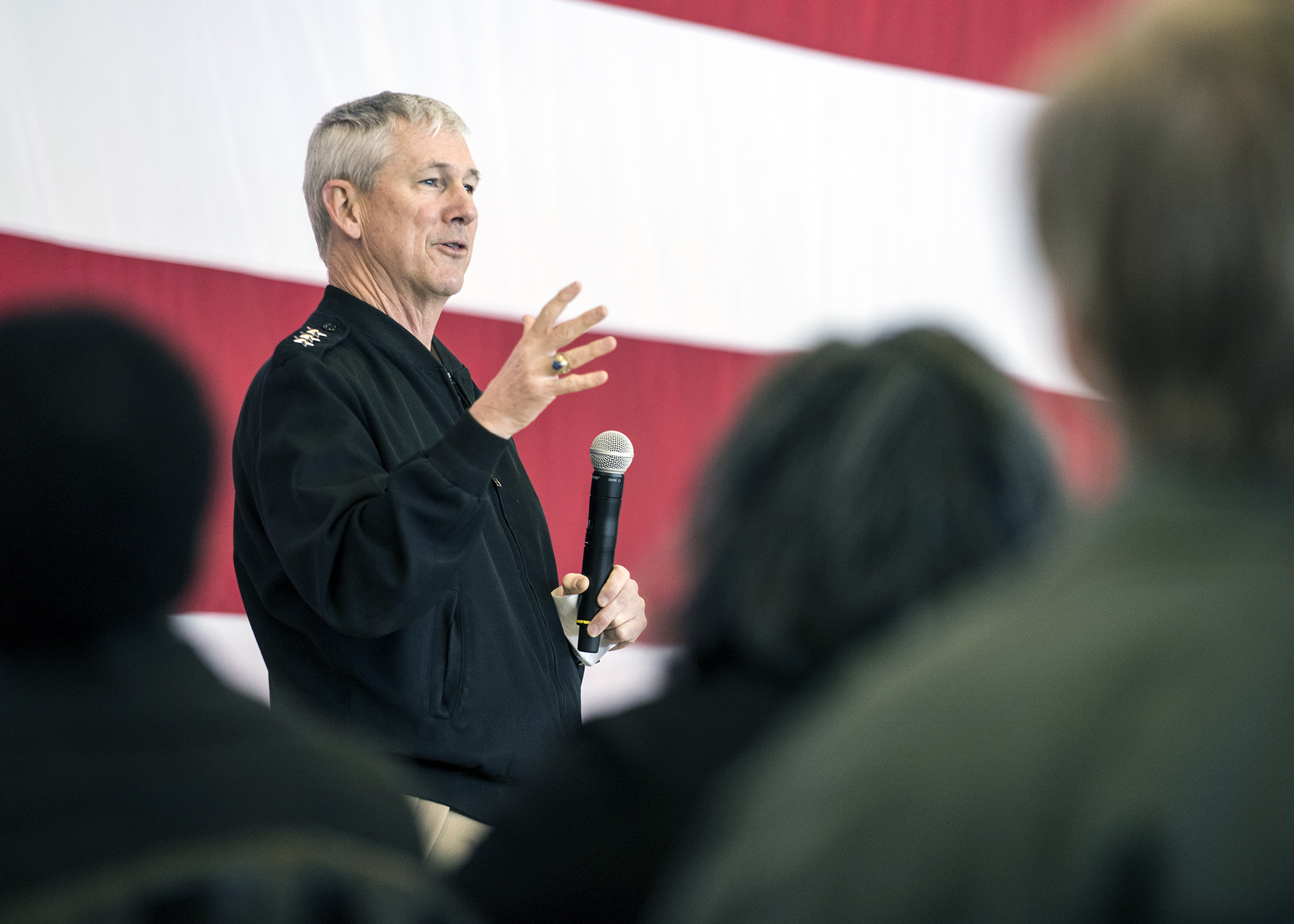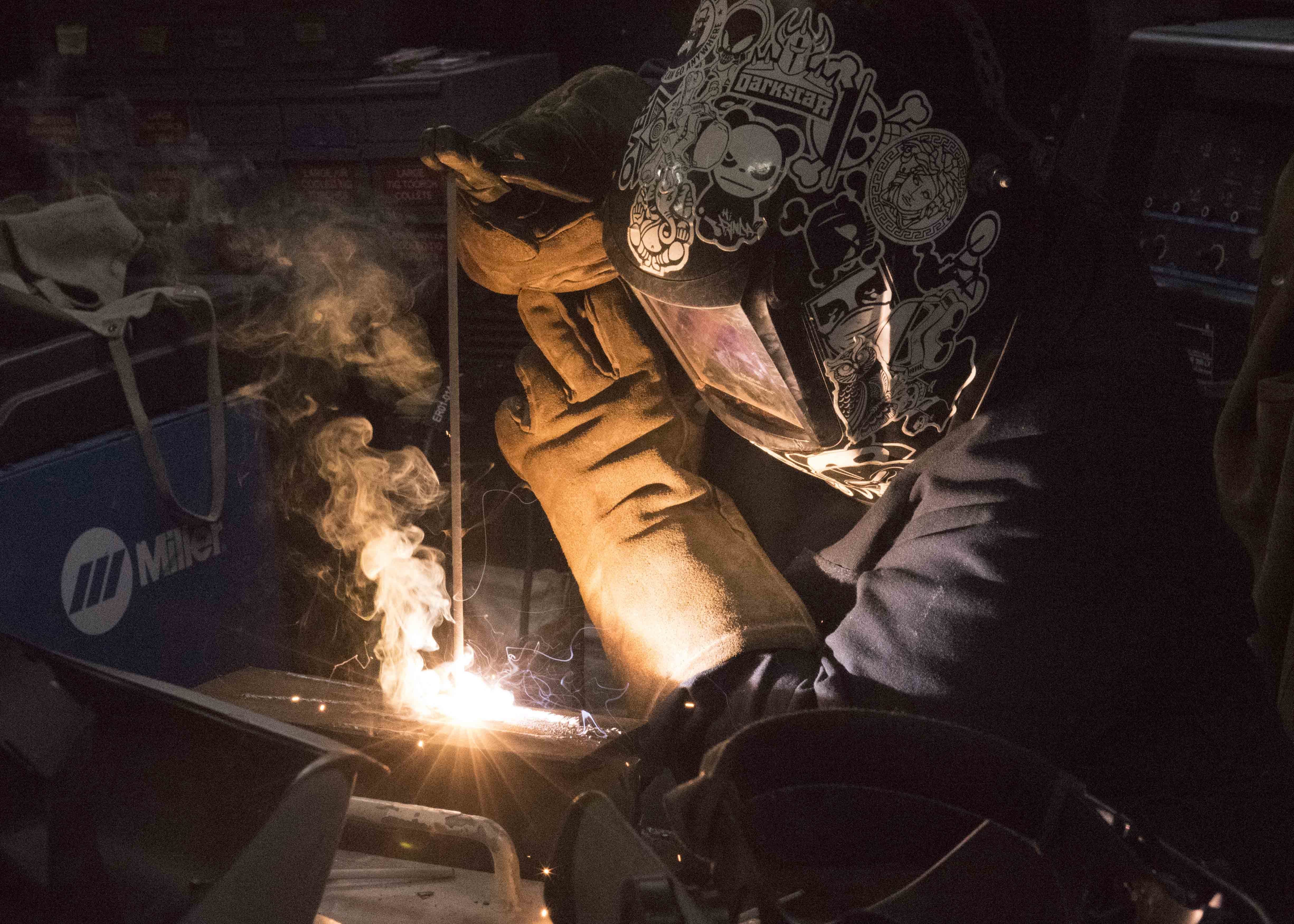
VIRGINIA BEACH, Va. — The Pentagon’s new focus on high-end warfare with sophisticated adversaries will put increased emphasis and pressure on Navy readiness, and the service’s maintenance infrastructure needs to better in fixing ships on time, the head of Naval Sea Systems Command said on Tuesday.
Taking cues from Secretary of Defense James Mattis’ new National Defense Strategy, all the services are focused on dialing up readiness to meet a higher-level threat, Vice Adm. Tom Moore said during a keynote speech at the American Society of Naval Engineers (ASNE) Fleet Maintenance and Modernization Symposium.
“The last year has had the biggest focus on readiness that I have seen in the 37 years I’ve been in the Navy, and that’s on all levels. Navy leadership is talking about readiness every single day, from the [chief of naval operations] on down,” Moore said.
“Right now we’re not delivering on everything we need delivered, and going forth we really need to deliver, and the pace of change is only going to get faster.”
According to Moore, the Navy’s public yards are delivering ships on-time about 45 to 50 percent of the time, while private shipyards are getting ships out on time about 35 percent of the time.
“It’s important to keep in mind that I have 55 ships coming into maintenance availabilities in the private sector in 2019, and in 2018 only 35 percent ships I have in availabilities are expected to move on time,” he said.
“Thirty-five percent is just not going to be good enough moving forward to meet the demands that fleet has today.”
He indicated that the four public shipyards are improving.
“We’re starting to see some results. Last year we delivered all four carriers all on time. We stubbed our toe a little bit on Ike,” Moore said referring to the maintenance availability of carrier USS Dwight D. Eisenhower (CVN-69) that has almost doubled in length. Work on nuclear submarines has also lagged in public yards, he said.
“All I have to do is look at Ike, Rhode Island and Ohio and Seawolf and some of the ships that are in the yard today to know that’s still a challenge for us.”

NAVSEA has a plan on the books to retool and refresh its four public yards over the next 20 years and has now turned its attention to the private yards: it needs to contract in a way that promotes more efficient work, and it needs more capacity through more drydocks.
“There are people who argue with me that whether we have a capacity challenge or not, but all I do is look that only 35 percent of the ships are delivered on time, and the conclusion I draw is there are not enough people working on ships,” he said.
“If we’re going to be successful, we have to be able to provide a stable and predictable workload for industry, and we’re going to have to be competitive.”
NAVSEA is taking yet another look at how it contracts with private shipyards for maintenance, with a plan to modify the Multiple Award Contract/Multi-Order (MAC-MO) contract strategy that was meant to optimize cost for the Navy.
“The consensus was, after two years of running with MAC-MO, I think we agree that strategy isn’t delivering the results that we need,” Moore said.
To improve the process, NAVSEA is working a pilot program that would bundle availabilities on each coast that would allow companies a more predictable set of work.
“We’ll get bids from industry and we’ll be able to lay [our] chips on the table. We’ll be able to look at the bids. We’ll be able to look at who has capacity and who doesn’t. We’ll be able to look at, hey, it’s important to keep an industrial base, and we’ll be able to make decisions that are not solely based on price that will allow us to deliver our ships on time and give you a little more stable and predictive work,” Moore said.
“My goal is eventually that we will eventually – on each coast – bundle availabilities six months at a time… so you can know at least what work you can have in the next six months and beyond.”
The Navy is set to test the scheme with a three-ship pilot program for repairs of guided-missile destroyers USS Arleigh Burke (DDG-51) and USS Bulkeley (DDG 84) and amphibious warship USS Gunston Hall (LSD-44).
With the increase in predictability for bundled MAC-MO contracts, the Navy hopes private industry will invest in infrastructure to handle the planned 355-ship Navy.
“The acquisition strategy we have today doesn’t incentivize industry to hire and make investments that I think they need to make,” Moore said.
“I think that acquisition strategy is the root cause of what I would say was a lack of capacity in the private sector today.”
In another bid to expand capacity, the NAVSEA is looking to certify drydocks to Navy standards. Moore said NAVSEA has been in touch with 12 shipyards who mostly don’t do work on warships that are interested in having their drydocks certified for use for repair work.
Moore said he’s also looking to increase private industries ability to work on nuclear submarines. Currently, there are four submarines in repairs at public yards.
Overall, Moore stressed the need to improve maintenance is growing as the Pentagon strives to be more dynamic and the service grows.
“We’re putting strain on the ships, we’re putting strain on the men and women out there wearing the uniform that are out there at the tip of the spear, and it’s up to us to figure out how to generate the readiness for the force that we have: 287,” he said.
“As we go up to 355, if we can’t generate the readiness with 287 in terms of delivering ships on time – as you know there’s a lot of skepticism that we can do that as we head to 355.”





